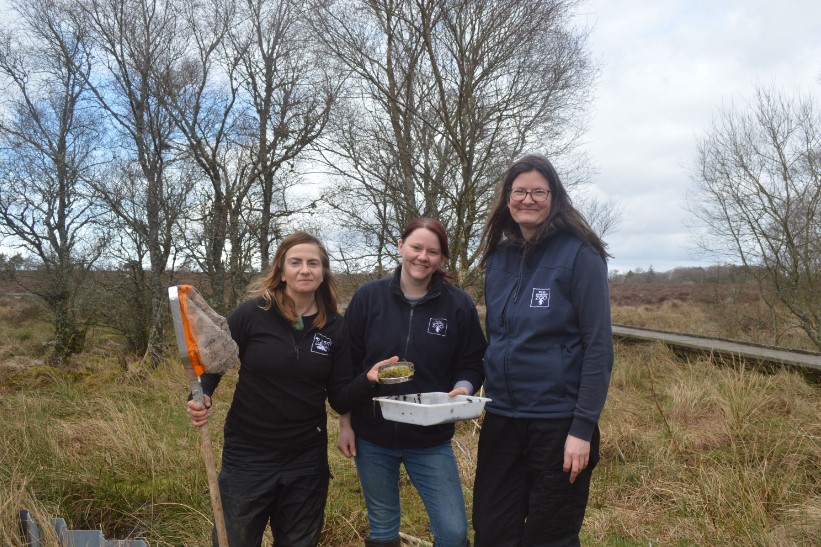Major milestone for conservation of the rare pond mud snail
14/04/2023 in RZSS

After a mammoth five-year search, the Royal Zoological Society of Scotland (RZSS)’s conservation breeding programme to boost numbers of the rare pond mud snail has reached a major milestone. Five of the tiny snails were found last month during routine monitoring by the RZSS conservation and keeping teams within the Pentland Hills, southwest of Edinburgh, Scotland.
The discovery comes after the wildlife conservation charity conducted a release of more than 80 pond mud snails – a fingernail-sized freshwater snail which lives in ponds, marshes and ditches – at the Red Moss reserve site in the Pentlands in 2018.
Formerly a widespread presence in Britain, pond mud snails are now limited to only a handful of sites across Scotland, England and Wales. The species is typically found in very clean water and survives on a diet of algae and decaying plants and their decline across Britain over the years is a result of habitat loss and pollution.
Dr Helen Taylor, Conservation Programme Manager at RZSS, said, “It was so exciting to finally find these wee guys at the release site in Red Moss – it is a hugely encouraging sign that pond mud snails from our original release in 2018 have survived.
“Although we have looked for signs of their survival over the years, we have not previously found any and could not be sure whether the release had been successful or not… until now!
“This finding also highlights the importance of RZSS’s long-term commitment to the reintroduction projects that we do – it can take years (literally) to establish whether a reintroduction effort is working and that’s why it’s so key that we establish long-term post-release monitoring programs such as these.”
The conservation breeding program at RZSS began in 2017 in partnership with the Buglife Marvelous Mud Snails program, which ran between 2017 and 2019.
Craig Macadam, Conservation Director at Buglife, said,
“The captive breeding program led by RZSS has been a great success and it’s wonderful to see that pond mud snails are thriving in the Pentland Hills.
“When we started the Marvelous Mud Snails project back in 2017 there were only five sites for this tiny mollusc. With the work undertaken by Buglife and RZSS over the past six years we’ve doubled the number of sites for this species in Scotland.
“It’s a great result for the snail and shows that all some species need to flourish is a helping hand.”
Sarah Robinson, Director of Conservation at the Scottish Wildlife Trust, which manages the Red Moss of Balerno Wildlife Reserve, said,
“The Scottish Wildlife Trust is delighted that our wildlife reserve near Balerno, Edinburgh, is playing a part in the conservation of this vulnerable species.
“This exciting step forward in the pond mud snails breeding for release programme confirms the importance of the Red Moss reserve, and its lowland raised bog, for both biodiversity and carbon capture.”
Across the city, with a view directly over to the release site in the Pentlands, the Royal Zoological Society of Scotland’s Edinburgh Zoo is home to a growing population of pond mud snails which have been successfully bred in the organisation’s dedicated facility since 2017.
During that time, RZSS conservation staff and keepers have greatly enhanced existing knowledge of how to care for this species so that it thrives and breeds.
As part of the program, RZSS staff carry out monthly monitoring of the Pentlands site to survey the number of snails present, gain a better understanding of the conditions the pond mud snails encounter in their natural habitat, and gather knowledge to inform decisions on further releases.
Over the next few years, RZSS plans to expand its work on the species and conduct annual releases into the Pentlands, with the aim of giving a much-needed boost to the population of snails that call this site home. The long-term goal is to improve the overall conservation status of the species in Scotland.
Featured Articles

An update from the Budongo Forest
19/04/2024 in Conservation

Edinburgh Zoo named best zoo in Scotland
15/04/2024 in Edinburgh Zoo

























Follow EZ